This post may contain affiliate links. Read more at our disclosure policy.
Pork Belly Burnt Ends are super tender, full of flavor, and so easy to make. This recipe is so delicious and popular that over 24 million people have devoured our viral video and thousands have made this recipe with smashing success! This pork belly recipe is a delicious twist on classic brisket burnt ends. These morsels of goodness have developed the nickname meat candy for good reason.

Vindulge Recipe Highlights
- Cubed Pork Belly is slowly smoked in a brown sugar seasoning, then braised in barbecue sauce, honey, and butter.
- As it finishes the pork belly is rendered into sticky pork cubes that melt in your mouth.
- It doesn’t matter what type of smoker you use, this pork recipe will work on all of them.
- This recipe is a great idea for for a party or large event as it’s always a crowd favorite and scales up or down easily.
Table of Contents
- Vindulge Recipe Highlights
- Origins
- Ingredients
- Preparation for Pork Belly Burnt Ends
- How to Smoke Pork Belly Burnt Ends
- Frequently Asked Questions
- Chef Tips
- Storage and Reheating
- What To Serve With Pork Belly Burnt Ends
- Wine Pairing for Pork Belly Burnt Ends
- Other Great BBQ Recipe Ideas
- Recommended Products
- Food and Cooking Safety Considerations
- Smoked Pork Belly Burnt Ends
Origins
The transformation of pork belly into something resembling the classic perfection of beef burnt ends is a pretty magical experience.
And, shortly after I released our video for our recipe, it had over 2 million views in less than 2 days. People loved this recipe! The video now has over 24 million views and counting, and the recipe is also featured in our critically acclaimed cookbook, Fire + Wine.

Ingredients
- Pork Belly – You can buy a full belly, which will run around 5 pounds, or you can buy smaller portions. Adjust the braise if using smaller portions. Buy with the skin removed when possible. You can substitute pork shoulder as well if you can’t find the belly.
- Seasoning – We recommend an olive oil binder and our pork rub, which is a mix of brown sugar, kosher salt, and savory spices. You can change the flavor profile with any of our seasonings.
- Braise Sauce – We recommend our Red Wine BBQ Sauce, unsalted butter, and local honey.
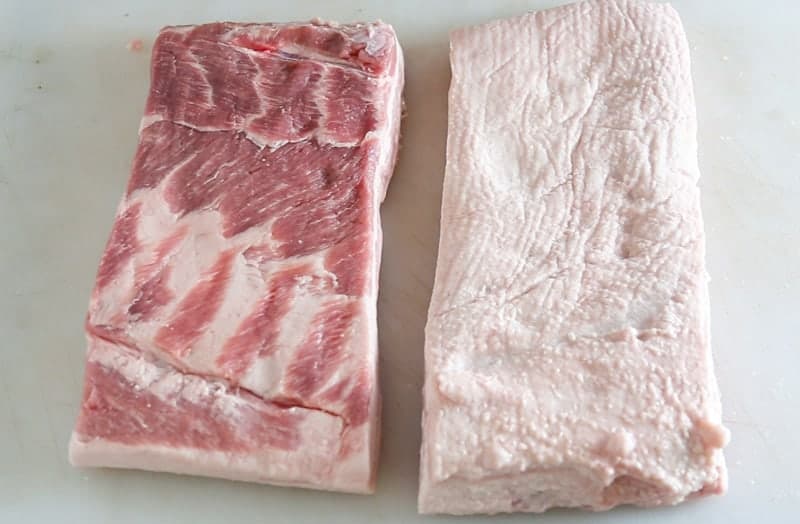
Buying Guide
This cut will come in many sizes at the grocery store, from small strips to a full slab (10+ pounds). Make sure to ask the butcher for skinless pork belly (this saves some weight when you have to pay by the pound). If the slab with skin is the only option, then look to be sure it isn’t overly fatty and remove the skin before you make this pork belly recipe.
When buying a smaller belly, be sure it’s the center cut of the slab. One side of the belly is thin and not very meaty. Another end tends to be mostly fat, which is difficult to fully render. So the center cut is ideal as it has a ratio of 50% meat and 50% fat.
Preparation for Pork Belly Burnt Ends
Place the pork belly on a large cutting board.
If you still see the skin on the pork belly, or there is a little extra fat, trim that off. Then cut the meat into 1 1/2 to 2-inch cubes. Don’t be afraid if at first the cubes seem a bit large. After cooking, your pork belly burnt ends will shrink down to the perfect bite sized piece.

Seasoning
Place the cubed pork belly in a large bowl or on a large baking sheet. Apply olive oil and pork seasoning and toss together until well coated.
Be generous (we use about 1 cup of dry rub for 5 pounds of meat). Feel free to adjust the amount based on your portion size.
Place the belly cubes on a wire cooling rack, rather than a baking sheet. Smoking with the wire rack is more ideal for smoking pork belly bites since it allows for better smoke circulation. Also, it will take much less effort to get the meat cubes on and off the grill.
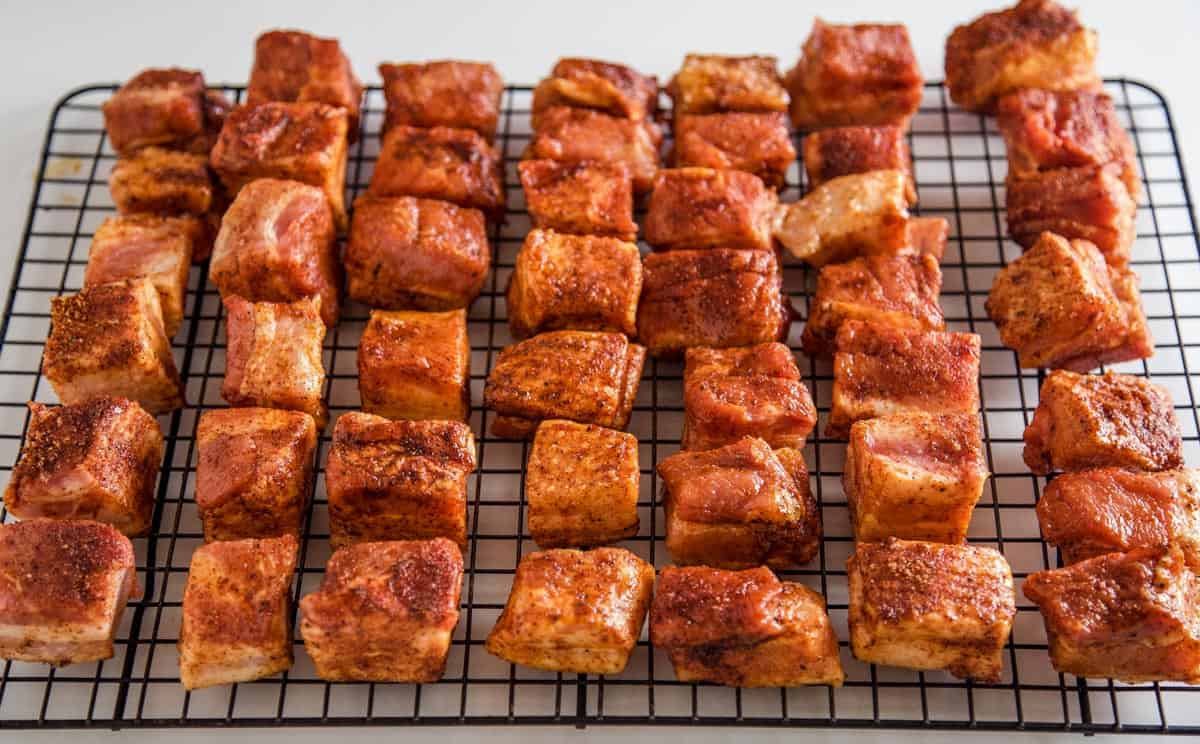
How to Smoke Pork Belly Burnt Ends
Easy steps for perfect pork belly burnt include smoking for flavor, covering in sauce to baste and render out the fat, and then finishing uncovered to let the sauce firm up.
- Smoke: Place on smoker and smoke for three hours at 250 degrees Fahrenheit (F), or until you like the color of the meat. A nice bark will form starting around the three-hour mark. This can take longer based on so many factors, like wind and how much bark you like. The key is, once you put it into the braising liquid, your bark is done forming.
- Braise: Next, add the pork belly cubes to a pan (we like a disposable aluminum pan or pyrex dish). Then, into the disposable pan, add the braising liquid. We use our rich Pinot Noir BBQ Sauce to really add that extra flavor (about 1 cup), 3-4 tablespoons of butter, which adds richness and acts as a fatty binding agent for bringing the sauce and honey together, and then 2 tablespoons of honey (or agave) to bring a stickiness and sweet characteristic. Then mix them all together.
- Cover and Continue Smoking: Place back into the smoker and braise for another 60 – 90 minutes. You will find that the liquid braises at or near a boil and that the fat renders down in the pork belly burnt ends keeping the pan moist. Braise until the internal temperature of the bites are 200-205 degrees F. We always recommend using a good digital thermometer to check your temp.
- Uncover: Finally, remove the foil cover and cook for another 15 minutes (uncovered) to let the heat tack up that sauce. Remove and enjoy some well-made pork belly burnt ends. It’s that simple. And incredibly delicious!

Oven Modification
To modify for the oven follow the same directions of slowly cooking in the oven at 250 degrees Fahrenheit, then covering with sauce, and finishing as the recipe suggests in the oven at 250 degrees. It will be the same amount of time.
Frequently Asked Questions
If you cook them all the way through, then the fat will render out and you’ll be left with a delicate and tasty burnt ends that don’t have noticeable fat.
It’s best to use pork belly. If you can’t find belly use boneless pork shoulder.
Yes. Remove the skin as it won’t render during the cooking process and will be chewy when eating. A more effective way is to buy the pork belly with skin off so you aren’t paying for the extra weight.
It will take 5 hours to cook and 15 minutes to finish (uncovered) to let the sauce harden up.
When we cater events we estimate 5 ounces of meat per person for a serving, so you roughly get three servings per pound. Trust us when we say people will want more.
Chef Tips
- Be sure your grease traps are clean. Pork belly will render a lot of fat and if they are blocked you run the risk of a grease fire.
- If you see cubes that are all fat, those won’t render. Discard them. If you are buying the pork belly, look to make sure you have a cut that is a balance of fat and meat. Ask the butcher for the center cut of the belly for the best fat-to-meat ratio. We mention this again based on a lot of experience and reader feedback.
Would you like to save this?
Storage and Reheating
You can follow this recipe and make the pork belly in advance up to one week prior to eating them. If you make them in advance be sure to store the pork belly in an airtight container with all of the braising liquid, including the rendered fat.
The fat will harden and that is fine.
To reheat, place in a large baking dish with all the braising liquid and fat and cover with aluminum foil. Bake at 325 degrees F for 30 minutes. The fat will render and the belly will maintain the soft texture and be warmed through.
You can also reheat the same way on a smoker at lower temps. Plan one hour at 250 degrees F for the pan to warm up.
What To Serve With Pork Belly Burnt Ends
Anytime we make these it’s always a good idea to balance the rich flavors of the pork belly with something not as rich. Our no-mayo coleslaw is perfect, especially if you make these into a sandwich. Or go with our grilled romaine Caesar salad.
You can explore our side recipes for more inspiration.
Wine Pairing for Pork Belly Burnt Ends
While I highly recommend a glass of rosé while cooking this delicious recipe (since, well, it takes upwards of 4 hours for the magical meal to come to fruition). But come burnt end time, we’re going big, with Syrah!
The flavors here are big and bold. You’ve got the smoke, some richness, sweetness, possibly spiciness. You need something that can handle that weight. There are several options, but I love a bold Syrah. Syrah from Washington State is my go-to. It has some richness, bold fruit, and some herbal notes. Big and balanced flavors, just like the burnt ends! Malbec and Zinfandel are also good pairings.
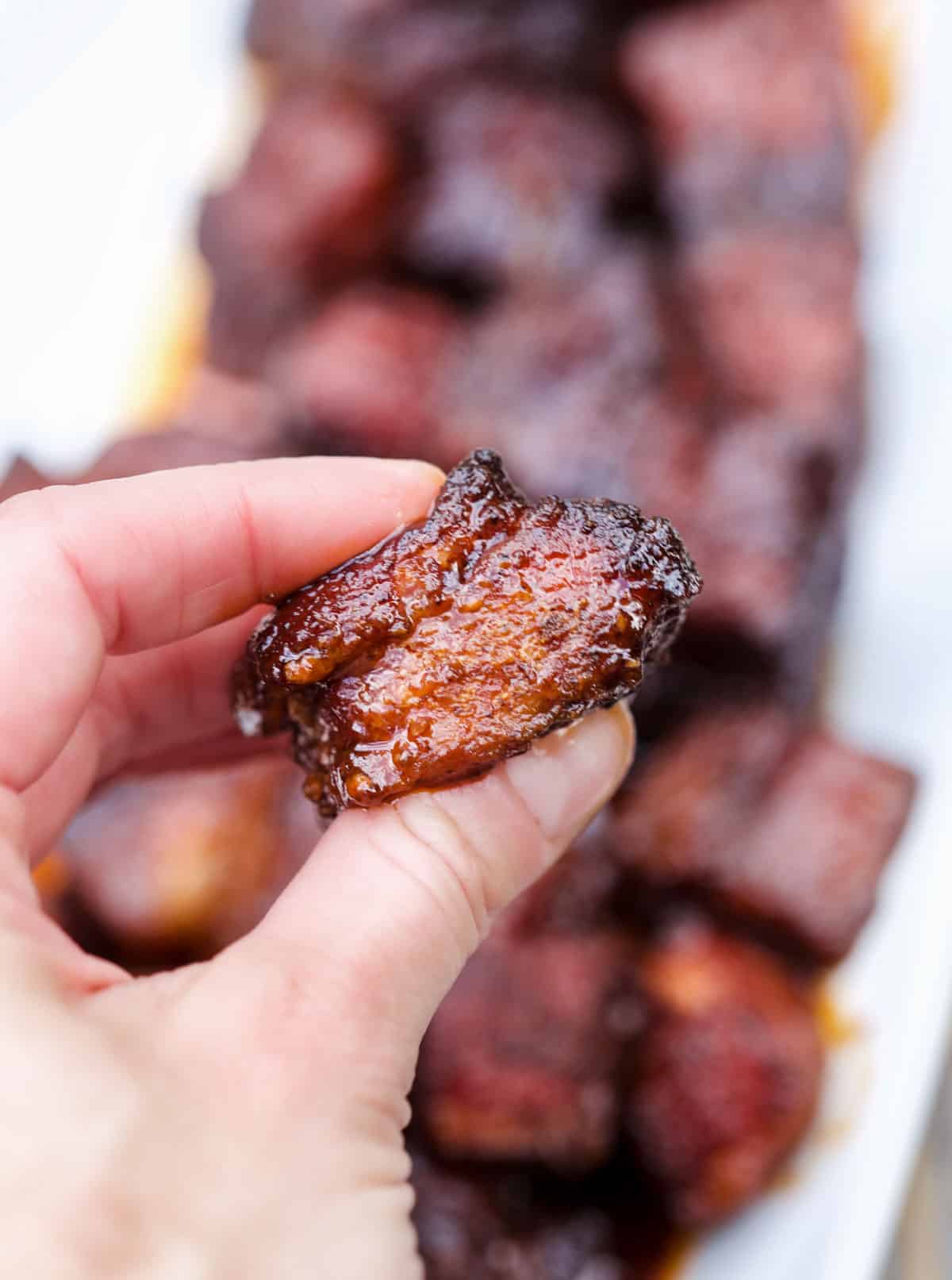
Other Great BBQ Recipe Ideas
Recommended Products
- You need an instant read thermometer to take the temperature of the pork belly.
- Food safety gloves for preparation.
Food and Cooking Safety Considerations
Pork belly has a considerable amount of fat that will render. This means you need to be sure that you have a CLEAN smoker and a clear path for the fat to drain AWAY from the fire. The grease from the rendering will ignite if it comes into contact with a flame source. If you are cooking a large amount on a small cooking surface be sure that you are changing out the grease tray during the cook.
For consideration, be sure to follow safe food handling practices. You are cooking the pork belly well over the USDA recommended temperature of 145 degrees F so the finished product is safe to eat.
- Do not use the same utensils on cooked food, that previously touched raw meat.
- Wash hands after touching raw meat and consider using gloves when prepping.
- Don’t leave food sitting out at room temperature for extended periods.
Within 48 hours of publishing this viral recipe in 2017 we had over 2 million views, and today is one of the original and most popular pork belly burnt ends recipes on the web with over 24 million views.

Buy Our sauce
Red Wine BBQ Sauce
Born from wildfires. Turned into BBQ Sauce. Smoky, balanced, delicious. Available shipped to your doorstep throughout the US.

Smoked Pork Belly Burnt Ends
Equipment
- 1 nitrile food safety gloves
Ingredients
For the Pork Belly Burnt Ends:
- 5 pounds pork belly, sliced into 1 1/2 to 2-inch cubes
- 3 tablespoons extra virgin olive oil
- 1 cup Pork Rub, (see notes for our favorite)
For the Sauce:
- 1 cup Pinot Noir BBQ Sauce
- 3 tablespoons unsalted butter
- 2 tablespoons honey
Instructions
- Preheat Smoker: Set smoker to 250 degrees Fahrenheit using fruit wood (we like cherry for color and sweeter flavor).
- Prepare Pork Belly: Trim excess skin and fat off the pork belly and slice it into 2-inch cubes and place into a large bowl. Add olive oil and dry rub and liberally and mix with your hands. Place cubes onto a wire rack or directly on the smoker.
- Smoke: Smoke uncovered for three hours. Look for a darker red color and a modest bark develop.
- Braise: Remove the pork belly cubes from the smoker and place into a foil pan and then add your BBQ sauce, butter, and honey, and stir. Next, cover the pan with aluminum foil and place back on the smoker.Cook for an additional 90 minutes or until the internal temperature (IT) of the pork belly is roughly 200 – 203 degrees Fahrenheit.
- Finish Smoking Uncovered: Remove foil from the pan, close the lid to the smoker, and smoke for another 15 minutes to let the sauce thicken up.
- Serve: Remove from smoker and serve.
Video
Notes
Nutrition
Nutrition information is automatically calculated, so should only be used as an approximation.

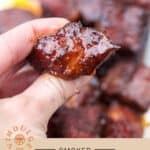


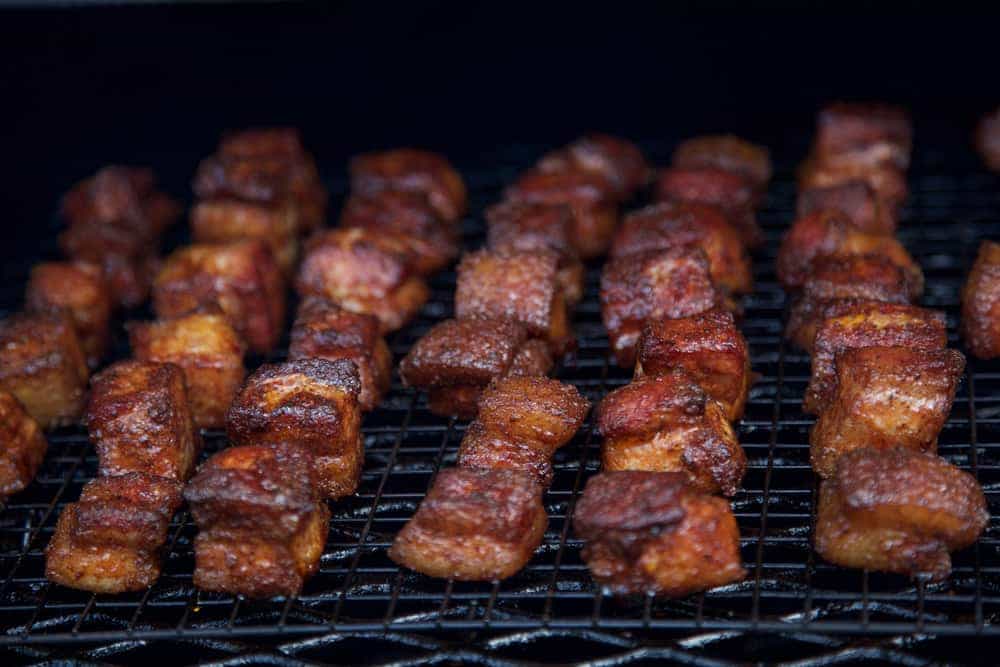

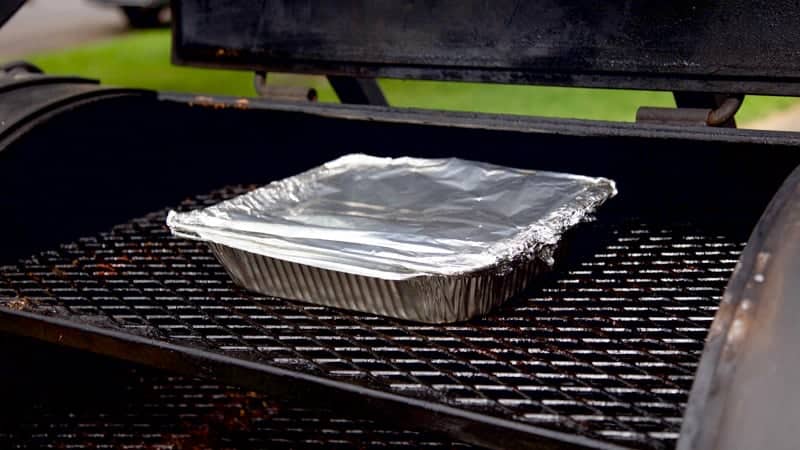



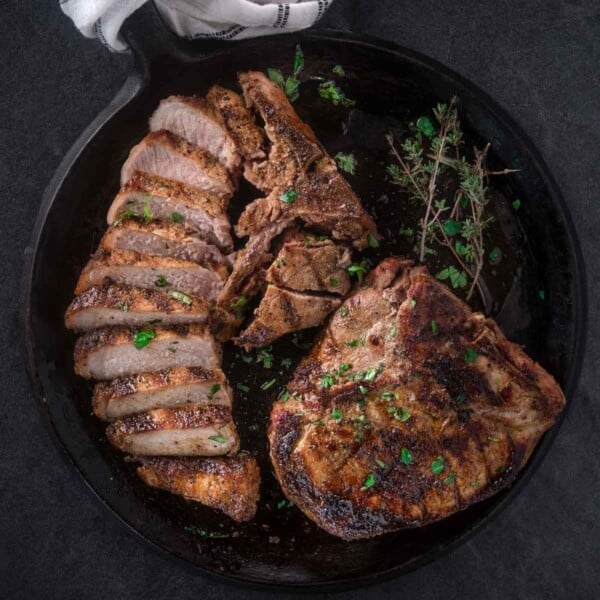


















What do you think of using pork loin for this?
I would caution that it may not have as much fat content. I definitely think pork butt will be great and I know there is a video from All Things BBQ out there using pork shoulder. Feel free to try it and let us know if it works out. If I did attempt with loin, I would likely watch the time on the smoke setting so as to not overcook it too soon. Different muscle, so different cooking method.
Will it work with pork side?
Nick, it may since it has similar fat content. Check out the marbling and if you see a good amount of fat, and no skin, then I say go for it. Similar technique.
Don’t have a smoker. Could you give recipe for oven?
Lisa, You can attempt these in your oven. Same concept, low heat (250 ish) to render the fat and get that exterior bark and flavor, so roughly 3 hours. Then braise in the pan for an hour and then uncovered to firm up the sauce. If you use a rub with a lot of sugar, just watch it uncovered to avoid burning.
can this recipe be done on a gas grill? I have wood chips to smoke but I’ve never smoked on a grill.
Carol, yes. You can do this on a gas grill, you may not get as much smoke influence as gas grills have a lot of open vents preventing a tight fit for keeping the smoke in the cooker. However, I would try it using a lower heat setting getting as close to 250 as possible and cook the pork belly on the indirect side of the heat (so not over the flame). Add your chips over the direct flame or in your smoker box. Same principle, smoke for the flavor and getting the bark/color on the bites, and then finish in the braising sauce.
You had me at burnt ends! Seriously my husband would go nuts over these too.
It’s hard not to go nuts over these 😉 They’re pretty addicting!!!
Yes, they are!
I cooked two slabs of these burnt ends, well over 100 chunks and they disappeared quickly.
That’s awesome!! So glad you enjoyed them 🙂
I’ve never heard of burnt ends, but I know quite a few people whose mouth would water just looking at these photos!
Thanks so much 🙂
Dont you think you should credit Malcom Reed for this recipe?
Not at all. It’s a very different recipe than Malcom Reed. Lots of folks have been experimenting with pork belly and discovering different flavors and recipes. His is great if you like them on the sweeter side.
I’d like to say something
What would you like to say? 😉
What if you don’t have a smoker? Can you do these in the oven?
Jay, yes. You can do these in the oven or gas grill. While you won’t get the same smoke flavor, if you cook at a low heat, 225 – 250 you are using that temperature to render the fat and get the color. I would cook in oven uncovered until you like the color of the bites. Then add to foil pan for the braise. The key will be watching for the color you want, and if you have a sugary rub, just watch and avoid any burning.
Oh THANK YOU so much for the question AND answer! I’m in an apartment that doesn’t allow any outdoor cooking, and I MUST try these! Yay for versatile pork! 🙂
Kate
Yeah!! And thanks for reaching out with your question 🙂
I’m going to give your Pork Burnt Ends a try, it sounds so good and the video was great.
I have a question do you marinade the pork at all?
Thurman
No, we don’t marinate or brine. This is primarily because the fat content keeps it juicy, so no need. You could always dry rub the day before to get more of that flavor into the meat. If you do marinate I’d love to hear how it turned out!
Ahhhh I love pork belly and you just took it to a whole new level! And, I do like that Charles Smith Boom Boom Syrah. I can just imagine what a great pairing that would be!
I plan on making this in a few days. I’m curious though, not questioning your cooking skills lol. Why an internal temp over 200? That’s seems too high. Won’t the meat be dry. Also, what’s the purpose of the olive oil as opposed to just the dry rub. Once again, just curious. Thank you!
Jeramie both good questions.
First in regards to the temperature, this is specific to pork belly (and pork shoulder). These cuts have a lot of fat and collagen. So we cook at the lower temperature so we can break down the fat and collagen into flavor, it melts away leaving a juicy cut of meat. If you go too far, yes it will dry out, but if you pulled at 165 or 180, it would still be chewy because the fat and collagen did not have enough time to break down.
The olive oil is really to help bind the dry rub to the meat. You can use any liquid, some use mustard (we do this for ribs). But in this case, it prevents too much of the rub from flaking away while cooking. It acts as a binder between meat and the rub.
Sean really is the meat whisperer! And I have no doubt the Boom Boom! Syrah tasted great with this recipe.